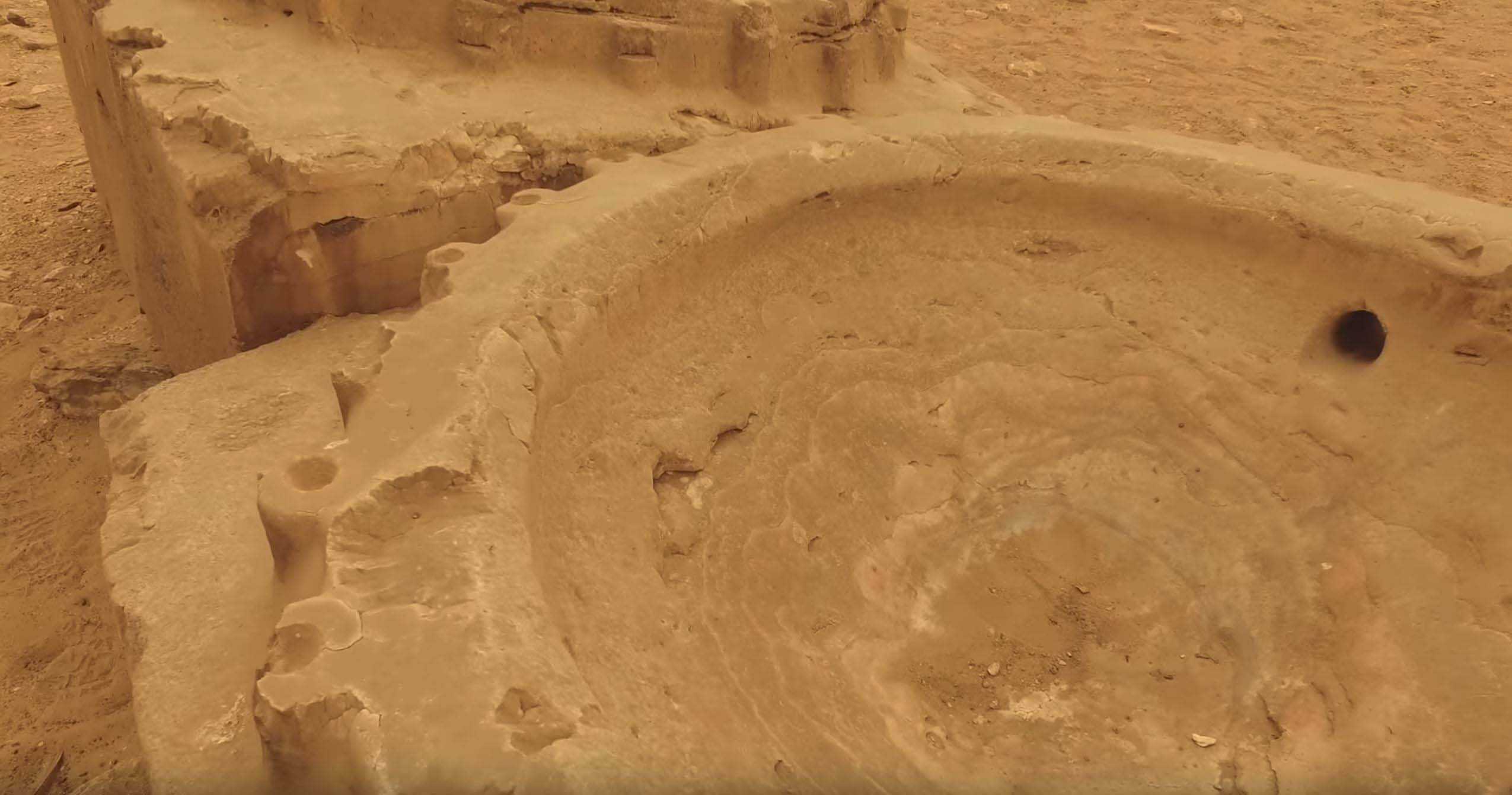YouTube Video Here: https://www.youtube.com/embed/riofsgyARLQ?feature=oembed&enablejsapi=1
Located a mere twenty-minute drive from one of the greatest ancient monuments built on the surface of the planet—the Great Pyramid of Giza—lay the remains of another ancient treasure of Egypt: Abu Gorab.
Referred to as Sun Temple by modern archeologists, this ancient site is well-known for being a cult place of the God Ra.
Part of the pyramid complex at Abu Sir, the sun temple at Abu Gorab was supposedly constructed during the fifth dynasty of the Old Kingdom, or sometime around 2400 BC.
 The Remains of a Pyramid at Abu Gorab, near Giza.
The Remains of a Pyramid at Abu Gorab, near Giza.
This Egyptian Sun Temple is meant to represent ritually the vivifying power of the sun god Ra, according to the religious conception of the priests of Heliopolis.
In Ancient times, Abu Gorab was covered in so-called Sun Temples.
According to ancient Egyptian history, six solar temples existed at Abu Gorab, north of Abusir, dating from the fifth dynasty.
However, only two have been identified today: that of Userkaf and that of Nyuserra, which is the best-preserved Sun Temple at the site.
Some authors suggest that the solar temples of Abu Gorab were used as places from which astronomical observations were carried out in order to determine the hours of the night. It is worth mentioning that the solar temples are oriented from east to west, curiously like the pyramids of the monarchs—Userkaf and Nyuserra—in Abusir.
Abu Gorab was also home to a massive obelisk, of which only its foundations remain standing today.
The Obelisk
Archaeological excavations at the western end of the courtyard revealed what appear to be the ruins of a large stone obelisk, which, according to experts, symbolized the resting place of the Sun/Ra.
The obelisk’s base is a pedestal, with sloping sides and a square top.
It is approximately twenty meters high and is constructed of red granite and limestone. Estimates of the combined height of the obelisk and base vary. According to experts, when the structure was built, the total height of the obelisk was most likely somewhere between fifty and seventy meters.
Abu Gorab is truly a mysterious place.
 A drill hole found at Abu Gorab. Notice its incredible perfection and accuracy. What sort of tools were used?
A drill hole found at Abu Gorab. Notice its incredible perfection and accuracy. What sort of tools were used?
The site is also home to these massive colossal red granite blocks which weigh several tons. Curiously, these massive blocks feature incredible characteristics: precision cuts, extremely well-polished surfaces and most importantly, these massive blocks were mounted in place with incredible precision as facing stones on the pyramid. Many authors have concluded after visiting the site that whoever laid these massive stones into position, had an extraordinary accuracy.
And while I can’t even imagine how beautiful the place must have been when it was completed thousands of years ago, its remains stand evidence of some sort of cataclysmic event that may have occurred there in the distant past: The massive stone blocks are scattered across the site as if some unknown force caused these casing stones to be scattered all over the site.
Just as the ruins of Puma Punku in Bolivia, the site of Abu Gorab appears to have ‘survived’ a cataclysmic event that caused its nearly total destruction.
Some would argue that this place was intentionally destroyed by a massive show of force. To understand this theory you’d have to visit the site and see the massive stone block scattered all over the place. It truly is one of the strangest places in Egypt.
But as if the history of the entire place, and its strange energies weren’t enough, theres more at Abu Gorab that will make you love the place. Set apart from all other features are these giant square alabaster “dishes” containing strange gear-like designs on their surface.
 Giant square alabaster “dishes” containing strange gear-like designs on their surface.
Giant square alabaster “dishes” containing strange gear-like designs on their surface.
Egyptologists believe that the massive basins were used by the ancient Egyptians to hold sacrificial animal blood, which, once filled, ran through perfectly drilled channels cut into the stone.
Curiously, despite this belief, experts have not found a single piece of evidence that suggests that sacrificial blood ran through these massive dishes and channels.
Interestingly, the inner surface of the basins are amazingly smooth to the touch and show signs of circular tool marks, suggesting that whoever crafted them did so with a technology we would admire today (and make fortunes marketing, too).
Many of these alleged ‘offering basins’ are precisely lined up near the entrance. These structures appear to have been left there at some point, waiting to be transported to another position. However, whatever occurred at the site caused them to remain where they are today.
 Another Drill Hole found at Abu Gorab.
Another Drill Hole found at Abu Gorab.
Despite this, a significant amount of these basins remains located in their original places.
The drill holes at the massive basins made of granite are truly impressive. As you can see from these images its builders and engineers possessed advanced tools to drill through the rock with ease.
Similar drill holes are found on other sites in Egypt as well. They too are found in Central and South America, Puma Punku being perhaps one of the best examples.

 Movie
Movie 2 months ago
55
2 months ago
55 






![Presidents Day Weekend Car Sales [2021 Edition] Presidents Day Weekend Car Sales [2021 Edition]](https://www.findthebestcarprice.com/wp-content/uploads/Presidents-Day-Weekend-car-sales.jpg)



 English (United States)
English (United States)